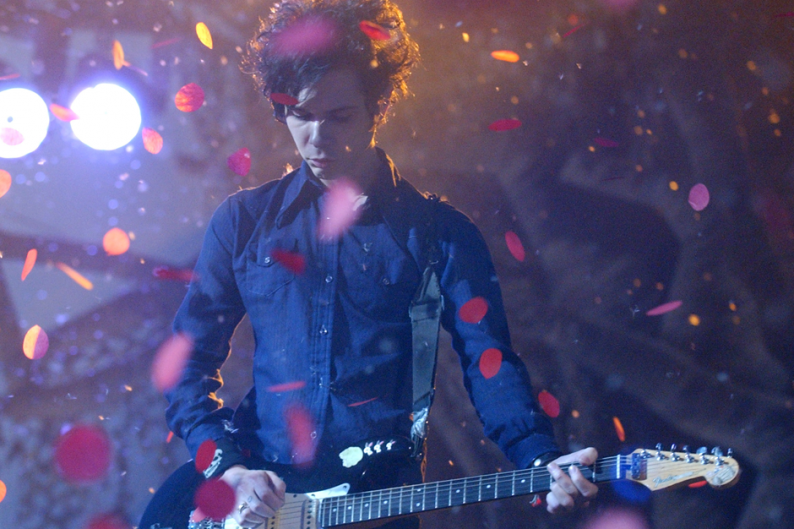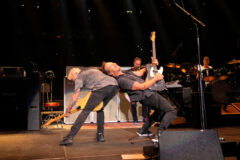20. Neil Young
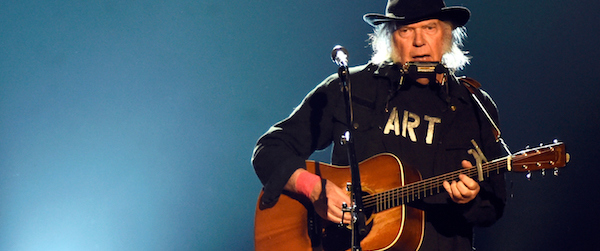
For more than 40 years, guitarists have made a good living ripping off members of his guitar-generation cohort (Hendrix, Clapton, Beck) with uncanny precision. But no one sounds quite like Neil, and not for lack of trying. Alt-country pickers have taken his rolling, pluck-and-strum acoustic work, and grunge jacked his lumbering electric distorto-jams. But no one combines those elements like Shakey, and that slow, craggy soloing style — the aural manifestation of the man’s skewed thought process — is straight-up sui generis.
Most Heroic Moment: The graceful, arcing lines that open the second solo on 1979’s “Powderfinger.” D.M.
19. D. Boon (Minutemen)
No guitarist further stretched the definition of what you could get away with and justify yourself as “punk” in the early ’80s — ripping Van Halen covers, high-bravado, classic-rock soloing, lithe funk, John Coltrane, somber Fahey-style interludes, his dad’s country records…and usually in 60 seconds or less. A mutant mix of Buck Owens, John Fogerty, and Television, boon would jerk out his spastic runs and art-funk chunks in a wildly treble-y jangle, ultimately setting the stage for the Red Hot Chili Peppers, Fugazi, and Liars.
Most Heroic Moment: The Ayler-like solos in 1984’s “S—t From an Old Notebook.” C.W.
18. Tony Iommi (Black Sabbath)
Listen, we could quibble, but there’s really no point in arguing. Tony Iommi’s down-tuned, low-string riffing with Black Sabbath is the Tigris and Euphrates of doom metal guitar. It all flows from here.
Most Heroic Moment: Iommi’s palm-muted bridge on 1973’s “Sabbath Bloody Sabbath” still sounds impossibly heavy today. D.M.
17. Lou Reed and Sterling Morrison
For lack of a better term, the Velvet Underground were a rock band. But if it’s hard to consider the Velvet Underground and the Kinks as the same genus now, imagine how it must have felt in 1966. Morrison and Reed formed a one-two punch as odd and original as anyone to come since, careening from Brill Building pop to tuneless, art-damaged wailing, or, better, indulging both at the same time. They invented noise-rock, but didn’t mean to.
Most Heroic Moment: The discordant squall that 1967’s “Heroin” feels more harrowing and disruptive and endless than any narcotic addiction. Presumably. S.K.
16. Frank Zappa
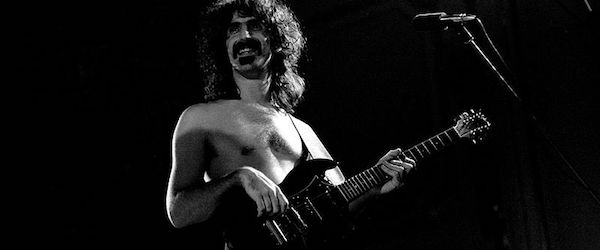
His highly satirical aesthetic was often criticized as being cold, but purely in guitar terms, Zappa was a multifaceted, highly emotional master capable of spiking his über-complex compositions with downright dirty playing. Upon the occasion of his death in 1993, Alice Cooper reminisced: “I saw [Zappa] play one night at a club with Hendrix. Frank got up and did an imitation of him. I’m looking at Hendrix and his mouth was open.” For good reason.
Most Heroic Moment: “Debra Kadabra.” D.M.
15. Greg Ginn (Black Flag)
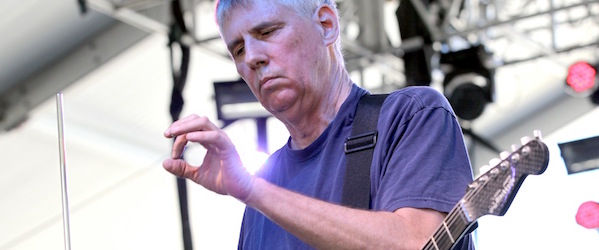
Sure, Henry Rollins’ barks on adrenaline-pumping Black Flag workouts like “Rise Above” were vicious — but that’s only because they had to compete with Greg Ginn’s explosive guitar seizures. Something like a punk Jackson Pollock painting, the axeman splattered free-jazz mini solos between rage-fueled hardcore riffs and pointed feedback, playing an instrument that was just as improbable: a see-through guitar with no working volume knobs and interchangeable pickups. Why did he change them? Because his sweat would rust through them too quickly.
Most Heroic Moment: The out-of-control riffing and ear-shattering feedback whinny of 1981’s “Thirsty and Miserable.” K.G.
14. Kerry King and Jeff Hanneman (Slayer)
To describe Slayer’s guitar tandem as “uncompromising” is a gross understatement. From the jaw-dropping speeds at which King and Hanneman play (“Angel of Death” begins at 210 beats per minute) to the cyclones of tinny notes that pass for “guitar solos,” the prickly pair took thrash metal to its high-velocity extremes in the mid-’80s and inspired innumerable underground metal bands (and even Tori Amos) to go further and faster. Somehow between their wrist-wrecking flurries, they’ve uncovered every evil-sounding harmony available on a fretboard.
Most Heroic Moment: All 29 glorious minutes of Slayer’s warp-speed thrash masterpiece, 1986’s Reign in Blood. K.G.
13. The Edge
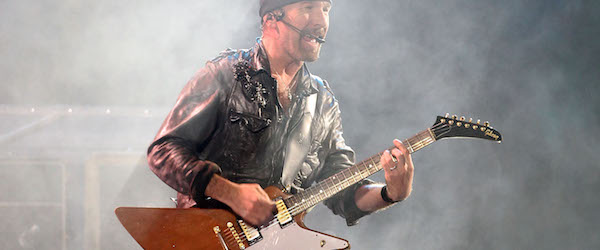
It’s difficult to imagine the monolith that is U2 ever having had anything to do with punk, but in the late-’70s U.K., Dave “The Edge” Evans masked and flaunted his willful ignorance of how guitars are meant to be played with forgiving delay pedals, forging a sonic trademark so distinctive that his band’s name became an adjective. That trademark has since been violated by hosts of imitators (including, too often, the Edge himself), but even U2’s most dug-in detractors would allow that parlaying limitation and brazen naiveté into 30-plus years of megastardom is a fairly unprecedented form of sticking it to the Man.
Most Heroic Moment: Every note of 1980’s Boy feels like an argument about how guitars in rock music are supposed to sound, but the record’s most famous riff is so for a reason: “I Will Follow” made a meal out of the high part of the fretboard and changed the very definition of “power chord.” S.K.
12. Andy Gill
Haunting CBGB as a student abroad circa 1976, Andy Gill returned to Leeds to co-found Gang of Four. Fusing metallic art-funk to Situationism, the band’s songs got banned by the BBC, and made them a controversial act in bleak industrial England. Their equally radical pop agenda transformed Gill’s cunning noise-dub guitar stabs into a global commodity: from Athens, where R.E.M. picked up Gill’s sloppy melodicism; to Los Angeles, where Red Hot Chili Peppers Californiciated his meta-grooves into funk-pop; and then back to New York where the Rapture-led dance-punk scene of the early aughts devoured his rhythmic riots.
Most Heroic Moment: The lyrical noise-echos of 1979’s “At Home He’s a Tourist.” J.J.
11. Ron Asheton (the Stooges)
Iggy covered in blood, Iggy covered in peanut butter, Iggy writhing on the floor — while the antics of the Stooges’ frontman made these Detroit proto-punks legendary, it was the humid atmosphere carved out by Asheton’s guitar that made them truly dangerous. On the landmark Fun House, Asheton’s best jams transcended the idea of “riffs” altogether, instead sounding like a swirling mass of sweat, puke, drugs, and scar tissue.
Most Heroic Moment: 1970’s “Down on the Street,” a slab of echo and overdrive made euphoric by production that brings to mind a concrete sweatbox. A.B.

